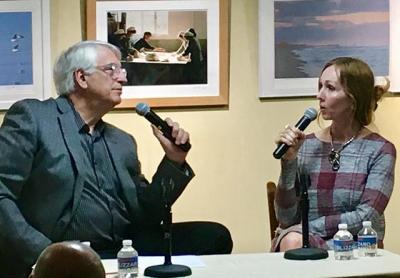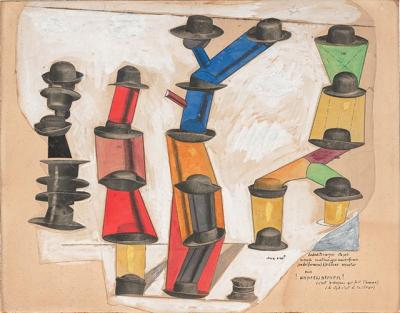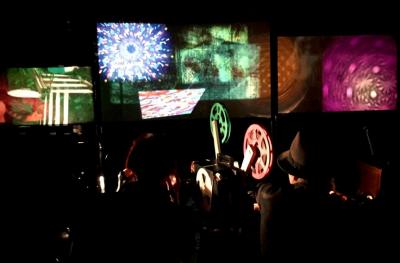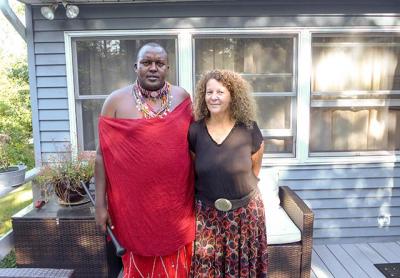Sag Harbor War Hero or Slippery Dave?
Sag Harbor War Hero or Slippery Dave?
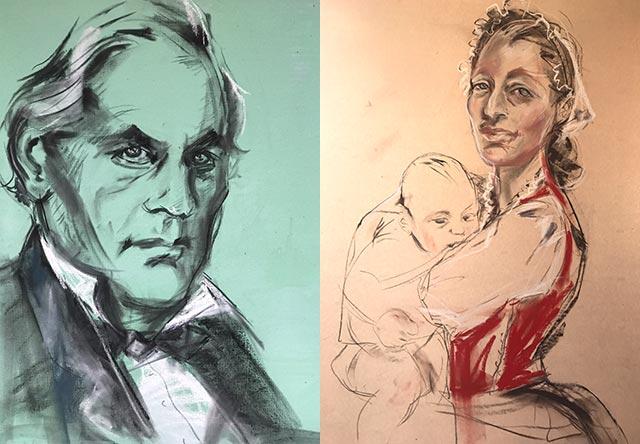
During the summers of 2014 and 2015, the Sag Harbor Whaling Museum presented “Captains, Mates, and Widows,” paintings by Sabina Streeter of figures from Sag Harbor’s whaling history. One of those characters was Capt. David Hand VI, a Revolutionary War hero nicknamed Slippery Dave for his numerous escapes from British prison ships.“I was so fascinated by his whole history that I thought he deserved more exposure,” Ms. Streeter said during a recent telephone conversation. The result is “The Five Wives of Captain Hand: A Maritime Melodrama,” an exhibition focused on Hand, his wives, and his family, that will open Saturday at the Whaling Museum and remain on view through Oct. 31. A reception will take place Saturday from 6 to 8 p.m.Four of the wives predeceased the captain when they were still young. “We don’t know how they died,” said Ms. Streeter, “except it wasn’t in childbirth. They’re all buried next to each other in the village’s Oakland Cemetery with identical sandstone gravestones,” which are flanked on one side by Hannah Sayre, his fifth wife, who has a marble monument, and on the other by the captain.James Fenimore Cooper, who lived for a time on Shelter Island, heard of Hand’s exploits and created a character modeled after him named Natty Bumppo, a brave frontiersman and hunter raised by Indians, who was the protagonist of Cooper’s “Leatherstocking Tales,” which include “The Last of the Mohicans,” “The Deerslayer,” and “The Pathfinder.”The exhibition will include, in addition to her portrait of the captain, portraits of his mother, his brother, Isaac, and Fenimore Cooper, among others. Ms. Streeter did not have existing imagery to work from. As was often the case with “Captains, Mates, and Widows,” she used as models friends whose faces she felt were appropriate for the characters.Ms. Streeter has a personal connection to the Hand family’s history. She lives in the 1828 house of a prominent whaling captain, Abram Vail, who was married to one of Hand’s daughters. The Hand house, one of the oldest in Sag Harbor, was moved from Southampton to Sagaponack to Church Street, where it is now, in Ms. Streeter’s backyard. “At one point the Vail House and the Hand House were a family compound, so I obviously feel a big connection,” she said.She noted that during the Watchcase construction, the Hand house suffered such damage to its foundation that it was sold. While it was being rebuilt, she asked the new owner for permission to look for artifacts on the property. “A leftover wife, perhaps? But the only thing I found was a porthole from an old ship. We plan to show a short movie in the exhibition that will be seen through that porthole.”Another exhibition of Ms. Streeter’s work, “Stonington Portraits: A Seafaring Saga,” is on view through Oct. 31 at the La Grua Center in Stonington, Conn.

